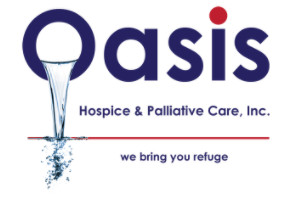Many people identify hospice care with cancer, but anyone who has been given a six-month or fewer to live prognosis, regardless of their sickness or condition, can benefit from this unique sort of end-of-life care. Here’s how heart disease sufferers can benefit from hospice care.
When Are Patients With Heart Disease Eligible for Hospice?
When a physician determines that a patient’s life expectancy is six months or less if their cardiac disease progresses as expected, the patient is considered eligible for hospice care.
Patients who are nearing the end of their congestive heart disease and are ready for hospice may exhibit a few symptoms. One indicator to look for is palpitations or weariness when at rest, as well as angina or dyspnea when exercising.
Patients who are being treated for congestive heart failure using vasodilators and diuretics, or who are being managed medically to the point where no surgical options are available, may also be eligible. Similarly, if a patient is not a candidate for or does not want to undertake invasive operations, hospice may be an alternative.
Obtaining Hospice Care for a Loved One
It can be tough to address the subject of hospice since the concept that someone is reaching the end of their life can be quite disturbing to everyone involved.
It’s vital not to wait too long, though, as many families regret not starting hospice sooner. It is a significant tool for persons with end-stage heart disease and other heart problems since it focuses on quality of life and comfort.
Keep a close eye on the symptoms of your loved one. If you notice your loved one has regular spells of angina, fatigue, or shortness of breath, you should talk to their doctor about a hospice examination to see if they are suitable for hospice at this time.
How Hospice Aids Heart Disease Patients
Hospice care is usually provided in the patient’s home. Many people would rather stay in the comfort and familiarity of their own home than in a hospital’s chilly and antiseptic surroundings. Patients who are already in long-term care institutions, on the other hand, can receive hospice treatment there.
- Hospice’s main purpose is to relieve patients’ physical and mental pain. Chest pain, weakness, exhaustion, and shortness of breath are common complaints among cardiac patients.
- Hospice staff assist with symptom management and coordination with the patient’s cardiologist. They also bring in any essential medical equipment and provide oxygen and medications to make the patient more comfortable.
- Another purpose of hospice is to keep patients’ symptoms at a manageable level at home, avoiding hospitalization. People who get hospice therapy had a reduced rate of hospitalization during their final month of life than those who do not. It also gives you a sense of security knowing that someone is there to assist you whenever you need it.
- Hospice can also send a chaplain to assist with spiritual and emotional well-being if the patient requests it. They offer spiritual guidance that is consistent with the patient’s beliefs and assist them in exploring questions and concerns about what they are experiencing now and in the future.
When Is Hospice Appropriate for Patients With Heart Disease?
Congestive heart failure may be very unexpected in its later stages, and the variable symptoms make estimating how long a patient might expect to live much more difficult.
This means that many patients with heart disease who go through the recurrent cycle of decline followed by recovery are missing out on the critical physical and emotional assistance that hospice provides.
Here are some of the indicators that a patient with heart disease might consider hospice care.
- The patient has received the best treatment for their disease and is not a candidate for any additional surgical or medical intervention.
- Shortness of breath, functional deterioration, or substantial fatigue symptoms are all signs that the patient’s heart is abnormal.
- With frequent angina attacks, the patient has severe coronary disease or congestive heart failure.
- The patient has exhausted all effective therapy and has decided not to pursue further treatment.
Keep in mind that only a doctor can make the clinical conclusion that a patient has a six-month or shorter life expectancy, which is essential for hospice care.
When you notice these indicators, stay watchful and contact your loved one’s physician about hospice care. The earlier a patient receives hospice care, the greater their quality of life can be.
What Does Hospice Do For Patients With Heart Disease?
The goal of hospice care is to manage patients’ symptoms and relieve their mental and physical anguish so that they can be as comfortable as possible during their final days.
Take Care of Your Physical Symptoms
Hospice can help people with heart disease deal with symptoms like weakness, weariness, functional decline, chest discomfort, shortness of breath, and hypertension.
Pain Management
Managing patients’ pain is an important element of providing patient comfort. Hospice professionals keep an eye on patients to measure their pain levels and help them discover the right medicine and other pain treatment options so they can live as fully as possible.
Equipment should be provided.
Hospice workers can also communicate with a patient’s cardiologist and other doctors about their symptoms, and they can give oxygen, medication, and any other medical equipment required to treat their heart illness.
Assist People Emotionally And Spiritually
Hospice employs a variety of techniques to assist patients emotionally and spiritually. Volunteers, for example, provide social support, and chaplains are available to talk to patients about spiritual concerns in a way that is consistent with their beliefs so that they can accept what is happening to them with some peace.
Allowing patients to stay at home is a good idea.
One of the most appealing aspects of hospice care is that it allows patients to remain in their homes, with family caregivers, or in a long-term facility while receiving care.
Assist Patients’ Families
Because watching a loved one’s health deteriorate can be extremely traumatic for families, hospice provides emotional assistance to them as well. A look at some of the components of family support is outlined below.
Assist with Decision-Making
Families of hospice patients face challenging decisions concerning their care and quality of life on a regular basis, and hospice workers can help them make these difficult decisions.
Hospice care is delivered in the patient’s home, and family caregivers play an important role in the patient’s care. As patients’ health deteriorates and communication becomes more difficult, hospice professionals educate families on how to effectively care for them.
Care During a Break
Caring for a patient with end-stage disease may be quite stressful, thus most hospices provide a limited amount of inpatient care so that caregivers can receive some much-needed rest and return to their caring tasks with a fresh perspective.
Hospice provides emotional and spiritual support to patients who are dealing with the often overwhelming emotions that come with this difficult period in their life. In addition, surviving loved ones can receive bereavement assistance for up to a year after the patient has died to help them cope with their sadness.

